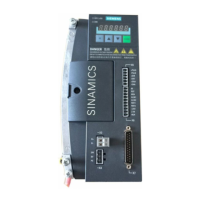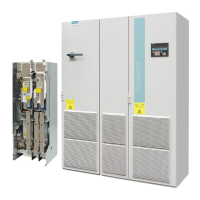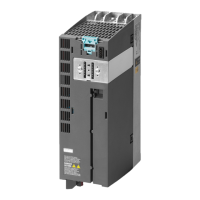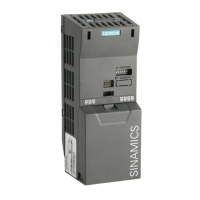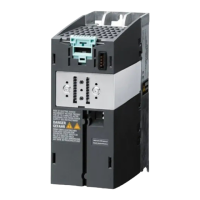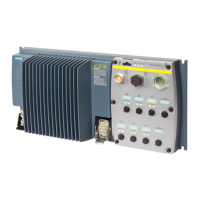DC link components
8.1 Braking Module Booksize
SINAMICS S120 Combi
Manual, Edition 07/2012, 6SL3097-4AV00-0BP3
143
8.1.3.3 X21 digital inputs/outputs
Table 8- 3 X21 digital inputs/outputs
Terminal Designation
1)
Technical specifications
1 DI low: enable Braking Module
DI high: Inhibit/acknowledge
Edge change high -> low: fault acknowledgement
DI low: braking resistor not activated manually
DI high: Braking resistor controlled manually
(quick discharge)
2)
2
If X21.1 and 2 are activated simultaneously, the
Braking Module inhibit has priority.
Voltage: -3 V to +30 V
Typical current consumption:
10 mA at 24 V DC
Level (incl. ripple)
High level: 15 V to 30 V
Low level: -3 V to 5 V
3 DO high: no prewarning
DO low: Prewarning, disconnection imminent
4 DO high: ready for operation, no fault
DO low: Fault (1→0)
5
6
Ground
Max. load current per output: 100 mA
Continued-short-circuit-proof
Voltage: 24 V DC
Max. connectable cross-section 1.5 mm
2
Type: Screw terminal 1 (see Chapter "Control cabinet installation and EMC / connection system")
1) DI: digital input; DO: digital output; M: Electronics ground
2) The fast discharge function is used for discharging the capacitors in the DC link after interruption of the line supply and
may be used a maximum of 1-2 times per week.
Terminal X21.1 - inhibit/acknowledge
Applying a high signal to terminal X21.1 inhibits the Braking Module. On a falling edge,
pending error signals are acknowledged.
Terminal X21.3 - prewarning
When a prewarning is sent, disconnection of the braking module is imminent.
This may be due to the following causes:
● The temperature of the Braking Module is 80% of the maximum value.
● 80% of the maximum ON time of the braking resistor has been reached (I2t monitoring).
● 80% of the maximum braking energy of the braking resistor has been reached.
● An incorrect braking resistor is connected (only braking resistors approved by Siemens
for this component are identified automatically).
Terminal X21.4 - fault
In the event of an overtemperature, the error cannot be acknowledged until after a cooling
phase.
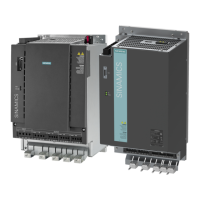
